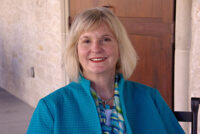We are working with the community to establish two Municipal Advisory Councils. The Springs MAC is up and running, meeting the fourth Tuesday of the month; this month the MAC is meeting on May 28 at the Springs Community Hall. We are scheduling a community meeting next month to discuss the boundaries and scope of work for the Eldridge-Kenwood-Glen Ellen MAC.
We’ve had some questions come up lately about the Brown Act, especially in the context of developing our new Municipal Advisory Councils. For elected officials the Brown act is second nature. But this is new for community boards and councils, and it requires some understanding. Sometimes the Brown Act feels counter-intuitive, like obstruction of discussion. The reality is that the Brown Act serves a great purpose. It ensures that the people’s business is done in public and allows for the people to join the discussion.
When you go to a meeting, such as the Board of Supervisors, the Sonoma Valley Citizens Advisory Commission, or our new Springs MAC, and a member of the public brings something up during “Public Comment” and asks questions, the Board must decline to engage in the discussion. This is frustrating to the commentator, and usually the Board too. But, because the issue the member of the public brought up isn’t on the agenda, the rest of the public doesn’t know that the conversation is going to take place; so the Board correctly declines to discuss. It feels like avoidance, but the reality is that it is protecting the public’s right to know and join the conversation.
Generally, the Chair of the Board will direct the public to contact the appropriate staff person for additional information, advise if the item is going to come back to the Board at a future date, or ask if the Board would like to agendize the discussion in the future.
Recently a member of the public commented that a “quorum” (a majority) of a certain board should just meet with members of the public in a coffee shop, or school, or someplace where they can just have a real conversation about how to address issues. It sounds reasonable, doesn’t it? But the Brown Act prohibits this type of activity because, again, the public’s business must be done in public. A regularly scheduled meeting, at a regularly assigned location ensures that the public has access. That doesn’t mean that a special meeting can’t be scheduled at a school or a different time, but these special meetings must be noticed in advance, and an agenda must be published.
How did the Brown Act come to be? Maybe understanding the Act will help explain why adhering to it is the right thing to do.
The Ralph M. Brown Act, located at California Government Code 54950 et seq., is an act of the California State Legislature, authored by Assemblymember Ralph M. Brown and passed in 1953, that guarantees the public’s right to attend and participate in meetings of local legislative bodies.
From the Act: “The people, in delegating authority, do not give their public servants the right to decide what is good for the people to know and what is not good for them to know. The people insist on remaining informed so that they may retain control over the instruments they have created.”
Who is subject to the Brown Act? A commission, committee, board, or other body of a local agency (including city councils) created by charter, ordinance, resolution, or formal action of a legislative body. Both the Sonoma Valley Citizens Advisory Commission and the Municipal Advisory Councils are created by formal action of the Board of Supervisors, thus they are subject to the Brown Act. Ironically, the legislature is not subject to the Brown Act; they must comply to the comparable Bagley-Keene Act, mandating open meetings.
What is considered a meeting: A meeting as defined by the Act includes any “congregation by a majority” of a legislative body at the same time and place to “hear, discuss, or deliberate” on any matter within the jurisdiction of the body. You might be surprised that congregation of the majority can be via email, social media, or phone call, not just gathering at a physical location.
We are fortunate in Sonoma Valley to have so many volunteer citizens who serve on our local boards. Our Sonoma Valley Citizens Advisory Commission meets on the fourth Wednesday of every month at the Sonoma City Council Chambers, and our new Springs Municipal Advisory Council meets on the fourth Tuesday of every month at the Springs Community Hall. Both begin at 6:30 p.m.



Be First to Comment